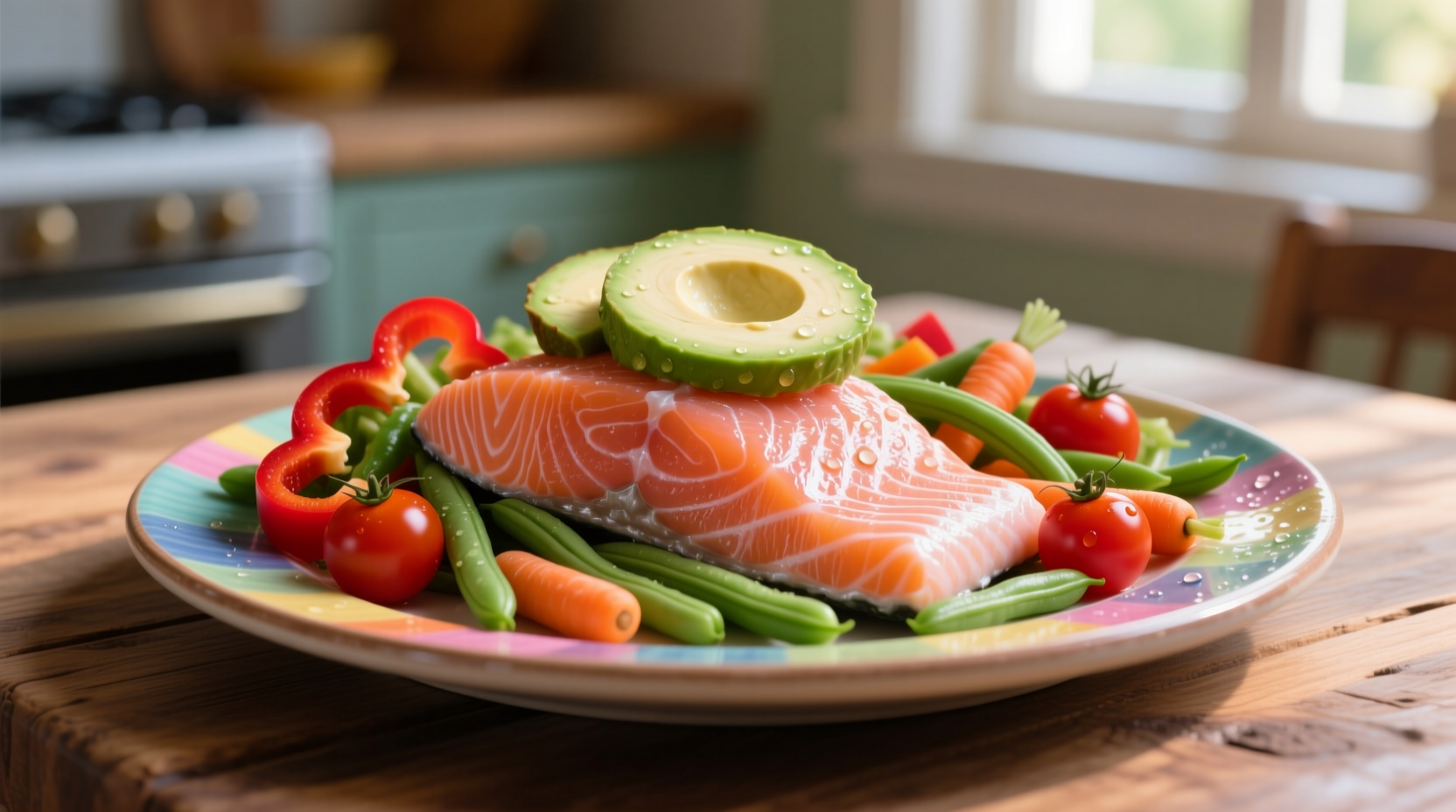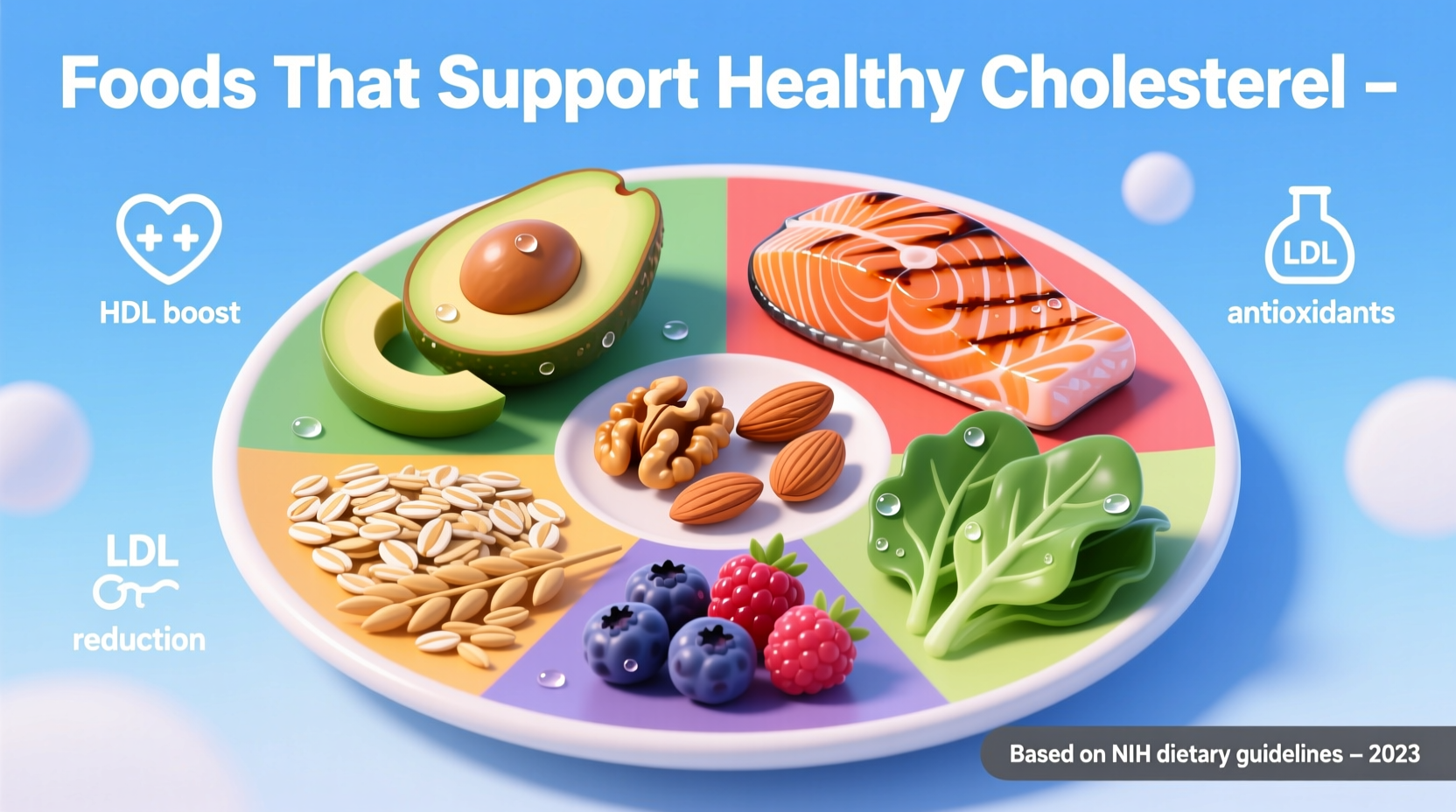Understanding Cholesterol and Dietary Impact
Cholesterol management through diet isn't about complete elimination—it's about balancing lipoproteins. Your body needs cholesterol for vital functions, but excess LDL (low-density lipoprotein) can build up in arteries, while HDL (high-density lipoprotein) helps remove it. Research shows dietary changes can lower LDL cholesterol by 5-15% within 4-12 weeks, making food choices a powerful tool for heart health.
The Science Behind Cholesterol-Lowering Foods
Certain foods work through specific mechanisms: soluble fiber binds cholesterol in the digestive system, healthy fats replace saturated fats, plant sterols block cholesterol absorption, and antioxidants reduce inflammation. The American Heart Association confirms that replacing saturated fats with unsaturated fats can lower LDL cholesterol by approximately 9%.
| Food Category | Key Compounds | LDL Reduction Potential | Daily Amount Needed |
|---|---|---|---|
| Soluble Fiber Foods | Beta-glucan, pectin | 5-10% | 5-10g |
| Omega-3 Rich Foods | EPA, DHA | 2-5% (triglycerides) | 2-3 servings/week |
| Plant Sterol Sources | Phytosterols | 8-15% | 2g |
| Monounsaturated Fats | Oleic acid | 5-10% | 25-35% of calories |
Top Cholesterol-Friendly Food Groups
Soluble Fiber Powerhouses
Soluble fiber forms a gel that binds cholesterol in your digestive tract. The FDA recognizes that consuming 3 grams of soluble fiber daily from oats can reduce heart disease risk. American Heart Association research shows consistent consumption of soluble fiber can lower LDL by 5-10%.
- Oats and barley: Aim for 1.5 cups of cooked oats daily (provides 3g soluble fiber)
- Legumes: Black beans, kidney beans, and lentils (½ cup provides 2g soluble fiber)
- Fruits: Apples, citrus fruits, and berries (one medium apple provides 1g)
Heart-Healthy Fats
Replacing saturated fats with unsaturated fats is more effective for cholesterol management than simply reducing total fat intake. Harvard T.H. Chan School of Public Health emphasizes that monounsaturated and polyunsaturated fats can significantly improve lipid profiles.
- Fatty fish: Salmon, mackerel, and herring (2 servings/week provides 500mg+ EPA/DHA)
- Nuts: Walnuts, almonds, and pistachios (1.5 ounces daily)
- Plant oils: Extra virgin olive oil, avocado oil (2-4 tablespoons daily)

Plant Sterol-Rich Options
Foods containing plant sterols can block cholesterol absorption. The National Institutes of Health confirms that consuming 2 grams of plant sterols daily can lower LDL cholesterol by 8-15%. While naturally occurring in small amounts in many plant foods, concentrated sources include:
- Fortified foods (check labels for plant sterol/stanol content)
- Nuts and seeds (especially sunflower seeds)
- Whole grains
- Legumes
Implementation Strategies for Daily Eating
Consistency matters more than perfection when modifying your diet for cholesterol management. The timeframe for seeing results varies, but most people notice improvements in LDL levels within 4-12 weeks of consistent dietary changes. Here's how to integrate these foods practically:
Morning Routine Boosters
Start your day with an oats-based breakfast. Add chia seeds (2 tablespoons provide 5g fiber) and berries to increase soluble fiber content. Replace butter with avocado or nut butter on whole grain toast.
Smart Swaps for Common Meals
When following traditional recipes, consider these substitutions that maintain flavor while improving cholesterol profiles:
- Use olive oil instead of butter for cooking
- Replace half the ground meat in recipes with lentils
- Choose whole fruit instead of juice for snacks
- Add beans to soups and salads for extra fiber
Important Context and Limitations
Dietary changes work best as part of a comprehensive approach to cholesterol management. The National Heart, Lung, and Blood Institute emphasizes that while diet is crucial, some individuals have genetic factors that limit how much dietary changes alone can improve cholesterol levels.
Consider these important boundaries:
- Dietary changes typically take 4-12 weeks to show measurable effects on cholesterol
- Some people (about 25%) are "hyper-responders" to dietary cholesterol
- Those with familial hypercholesterolemia often need medication alongside diet
- Individual responses to specific foods can vary based on gut microbiome composition
Common Misconceptions Clarified
Several cholesterol myths persist despite evidence to the contrary. Eggs, for instance, have less impact on blood cholesterol than previously thought for most people. The 2020-2025 Dietary Guidelines for Americans removed the previous limit on dietary cholesterol, focusing instead on limiting saturated fats.
Another misconception is that all fats are bad. In reality, the type of fat matters significantly more than total fat intake. Replacing saturated fats with unsaturated fats produces better cholesterol outcomes than low-fat diets that replace fats with refined carbohydrates.
Creating Sustainable Dietary Changes
Long-term success with cholesterol-friendly eating comes from gradual, sustainable changes rather than drastic overhauls. Focus on adding beneficial foods rather than just restricting "bad" ones. Meal planning and batch cooking can help maintain consistency. Remember that dietary patterns matter more than individual "superfoods"—the Mediterranean diet, for example, consistently shows benefits for cholesterol management through its overall pattern of whole foods, healthy fats, and plant-based ingredients.











 浙公网安备
33010002000092号
浙公网安备
33010002000092号 浙B2-20120091-4
浙B2-20120091-4